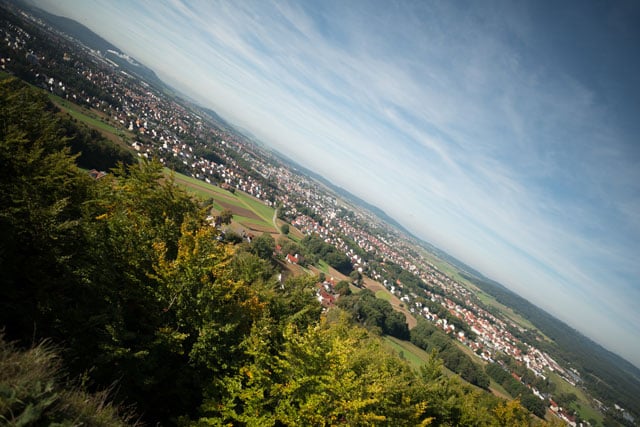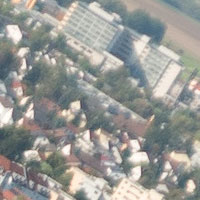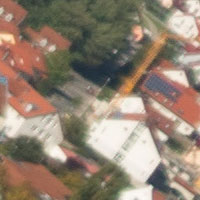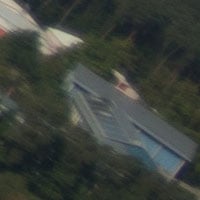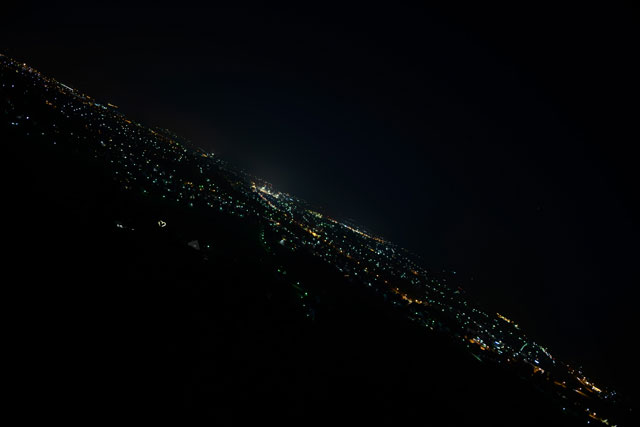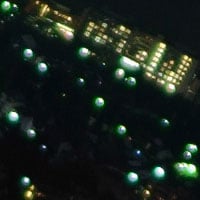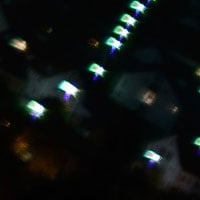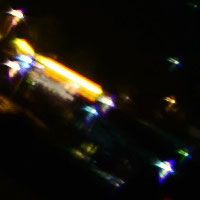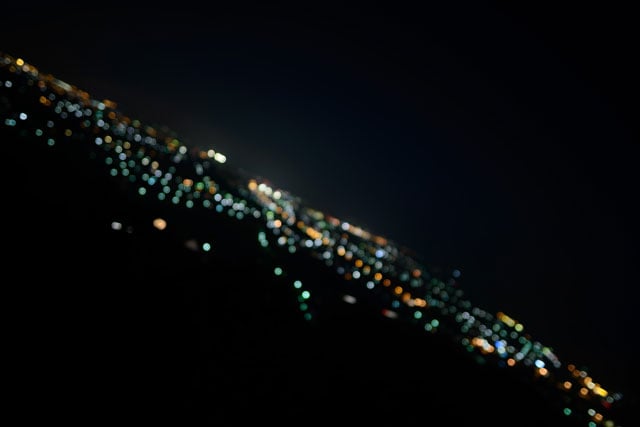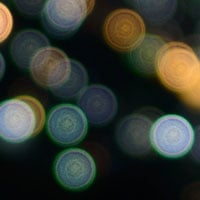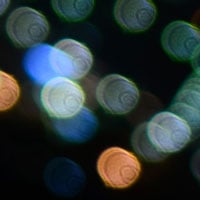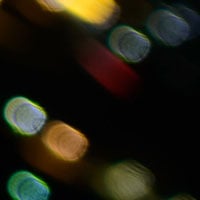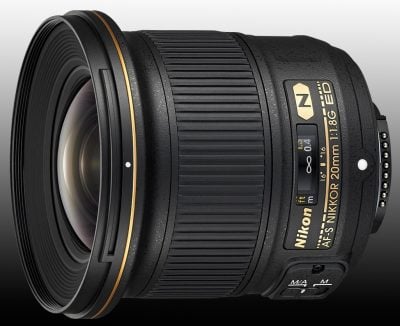Nikon 20mm f1.8G review
-
-
Written by Thomas
Quality
Testing: Longitudinal Chromatic Aberration and focus shift
With lenses offering an aperture of f2.8 or larger I test for longitudinal CA (loCA, a.k.a. “axial color” or “bokeh CA”). The 20/1.8G shows some magenta coloration in the foreground (left) and greenish hues in the background (right). By f5.6 the effect is gone. The test also exhibits very little focus shift.
Nikon 20mm f/1.8G Longitudinal Chromatic Aberration (loCA) |
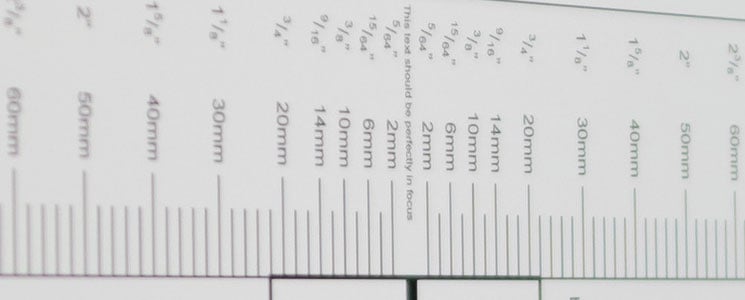 |
| 100% crop, 20mm, f1.8, shot from 1m, left = foreground, right = background |
Sharpness and contrast
Let’s have a look at the theoretical performance (MTF-charts) of the 20/1.8G compared to the Nikon AF-S 14-24mm f2.8G first:
Nikon 20mm f/1.8G versus Nikon 14-24mm f/2.8G MTF | ||
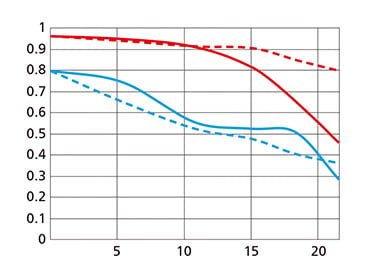 | 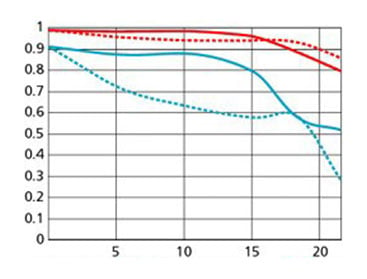 | |
| Nikon 20/1.8G at f1.8 | Nikon 14-24/2.8G at 24mm f2.8 | |
These charts show the lens-performance at the largest aperture which is f1.8 for the fixed-focal and f2.8 for the zoom – so we’re not exactly comparing apples to apples here. Higher values are better and the closer the dotted and the continuous lines of each color are together the less astigmatism (= resolution depends on the orientation of the test-pattern) the lens has. The x-axis displays the distance from the optical axis (=center of the sensor) in mm. I’ll show you the real-life performance at 4 mm (center), 13 mm (DX-corner), and 20 mm (FX-corner) on a D800.
From the charts the new lens looks inferior to the zoom-lens. But you should keep in mind that these charts give the Nikon 14-24/2.8G an advantage of 4/3 of a stop because the Nikon 20/1.8G is shown and measured at f1.8. Evaluated on its own the 20/1.8G should be pretty sharp at the center with a clear drop in resolution even before the borders of the DX image-circle are reached. Let’s see how this theoretical performance translates into real life results in the sharpness test based on Siemens-stars – and how the performance increases when you stop this lens down.
What follows are near-center results (first column) followed by DX-corner results and FX-corner results on a D800. The D800 results from the DX-corner should be a very good approximation for performance on a 16MP DX sensor (like the D7000), because the pixel-pitch of both sensors are the same. But differences in the AA-filter and micro-lens-design of a D800 and a D7000 might yield different end-results.
Processing was done in Lightroom 5.6 from RAW at camera standard settings. Noise-reduction is set to 0, sharpening to 70/0.5/36/10, with no extra tone, color, or saturation-adjustment. White-balance was adjusted to a neutral white and I did some exposure compensation to make the brightness match. CA-removal is ON. Focus was optimized for center, DX-corner and FX-corner respectively at f1.8.
The following are all 100% crops!
Nikon 20mm f/1.8G ED with Nikon D800 100% crop from center | Nikon 20mm f/1.8G ED with Nikon D800 100% crop from DX-corner | Nikon 20mm f/1.8G ED with Nikon D800 100% crop from FX-corner | ||
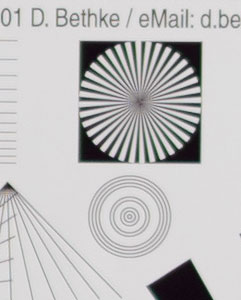 | 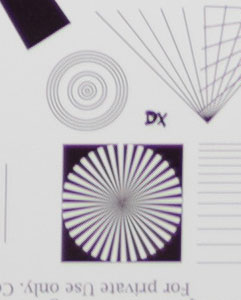 | 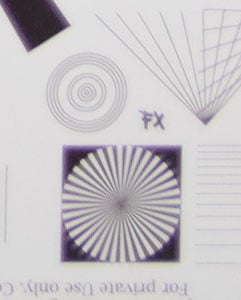 | ||
20mm, f1.8, 100 ISO | 20mm, f1.8, 100 ISO | 20mm, f1.8, 100 ISO | ||
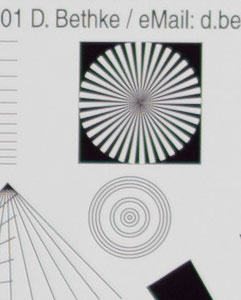 | 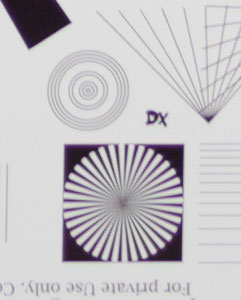 | 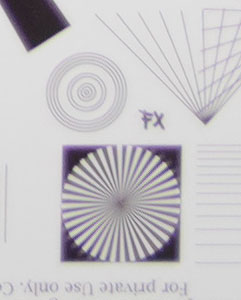 | ||
20mm, f2.0, 100 ISO | 20mm, f2.0, 100 ISO | 20mm, f2.0, 100 ISO | ||
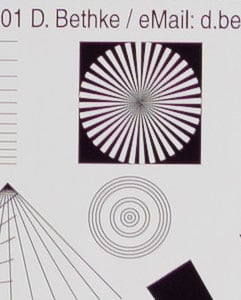 | 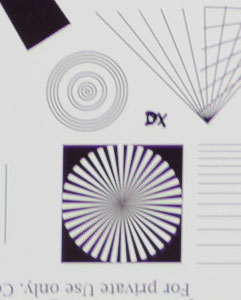 | 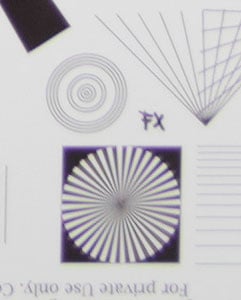 | ||
20mm, f2.8, 100 ISO | 20mm, f2.8, 100 ISO | 20mm, f2.8, 100 ISO | ||
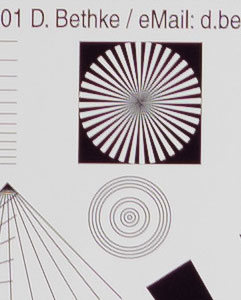 | 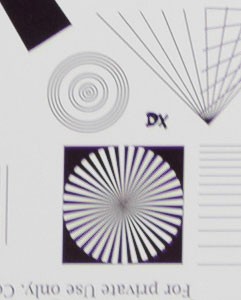 | 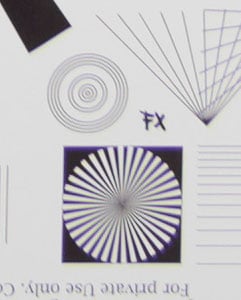 | ||
20mm, f4.0, 100 ISO | 20mm, f4.0, 100 ISO | 20mm, f4.0, 100 ISO | ||
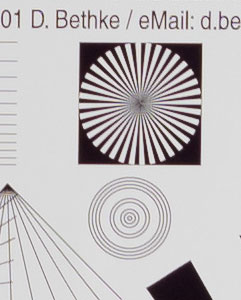 | 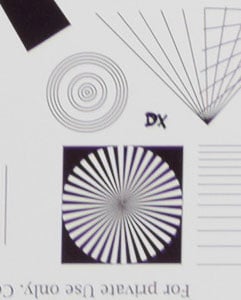 | 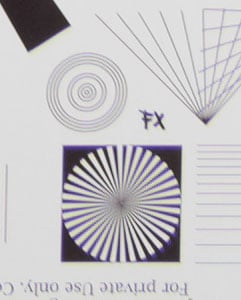 | ||
20mm, f5.6, 100 ISO | 20mm, f5.6, 100 ISO | 20mm, f5.6, 100 ISO | ||
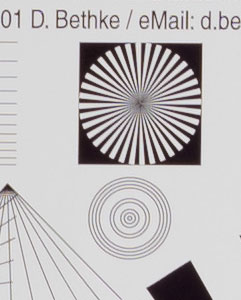 | 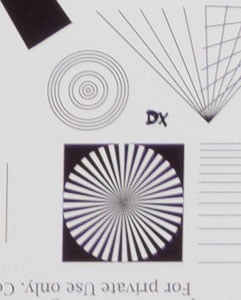 | 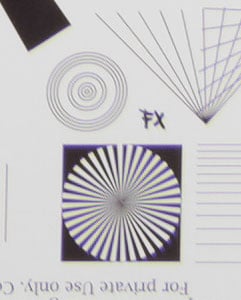 | ||
20mm, f8.0, 100 ISO | 20mm, f8.0, 100 ISO | 20mm, f8.0, 100 ISO | ||
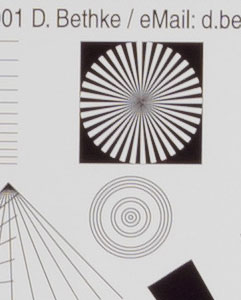 | 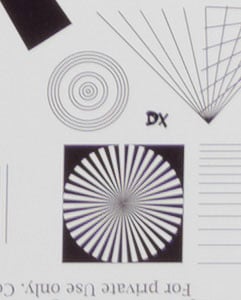 | 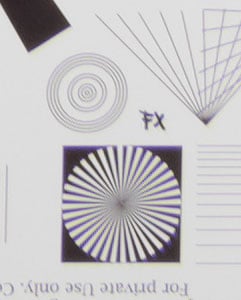 | ||
20mm, f11, 100 ISO | 20mm, f11, 100 ISO | 20mm, f11, 100 ISO |
These 100% crops directly from a 36MP D800 sensor show that this lens is a very good performer in the center. But performance indeed suffers towards the borders of the DX image circle. At the DX-corner the Nikon 20/1.8 also shows some field curvature: I had to focus a bit differently from the center to achieve the highest resolution. In the FX-corner the field of sharpest image curves back to where it is at the center, so no special attention is needed here. The FX-corner is less contrasty wide-open than the DX-corner but shows quite some resolution through the haze of residual spherical aberrations and coma. Stopping down to f2.8 or f4 brings the center to excellent performance and visibly improves the FX-corner. But unfortunately the DX-corner has developed some astigmatism by then and needs stopping down to f5.6 or even f8 to improve significantly. But keep in mind that these are 100% crops from a 36MP sensor.
Diffraction is setting in slightly at f11. So better shoot your landscape shots with this lens at f8 if you want the best definition. Distortions are mild and easy to correct.
Following is a direct comparison to the Nikon AF-S 14-24mm f2.8G (2nd row) at 21mm f2.8:
Nikon 20mm f/1.8G ED with Nikon D800 100% crop from center | Nikon 20mm f/1.8G ED with Nikon D800 100% crop from DX-corner | Nikon 20mm f/1.8G ED with Nikon D800 100% crop from FX-corner | ||
 |  |  | ||
20mm, f2.8, 100 ISO | 20mm, f2.8, 100 ISO | 20mm, f2.8, 100 ISO |
Nikon 14-24mm f/2.8G at 21mm with Nikon D800 100% crop from center | Nikon 14-24mm f/2.8G at 21mm with Nikon D800 100% crop from DX-corner | Nikon 14-24mm f/2.8G at 21mm with Nikon D800 100% crop from FX-corner | ||
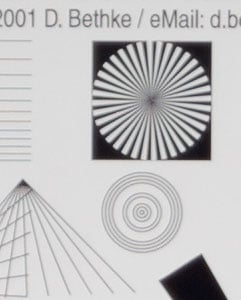 | 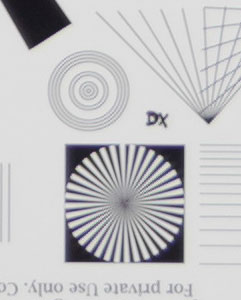 | 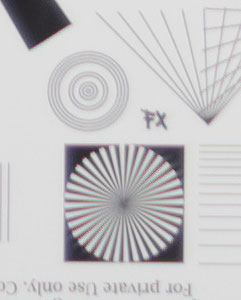 | ||
21mm, f2.8, 100 ISO | 21mm, f2.8, 100 ISO | 21mm, f2.8, 100 ISO |
In direct comparison the 20/1.8G clearly leads the 14-24/2.8 in center performance, and is on a par in the DX- and FX-corner at f2.8. But that is only testament to the astonishing performance of the ultra-wide 14-24mm zoom which even gets better the wider you zoom out.
If you want to know, how Nikon’s more affordable wide-angle full-frame zooms compare, here are the results from the Nikon AF-S 18-35/3.5-4.5G (2nd row) and the Nikon AF-S 16-35/4.0G VR (3rd row) at 21mm f4.0 compared to the Nikon AF-S 20/1.8G (1st row) at f4.0:
Nikon 20mm f/1.8G ED with Nikon D800 100% crop from center | Nikon 20mm f/1.8G ED with Nikon D800 100% crop from DX-corner | Nikon 20mm f/1.8G ED with Nikon D800 100% crop from FX-corner | ||
 |  |  | ||
20mm, f4.0, 100 ISO | 20mm, f4.0, 100 ISO | 20mm, f4.0, 100 ISO |
Nikon 18-35mm f/3.5-4.5G VR at 21mm with Nikon D800 100% crop from center | Nikon 18-35mm f/3.5-4.5G VR at 21mm with Nikon D800 100% crop from DX-corner | Nikon 18-35mm f/3.5-4.5G VR at 21mm with Nikon D800 100% crop from FX-corner | ||
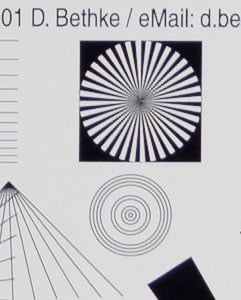 | 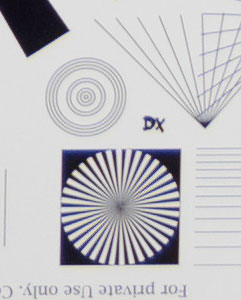 | 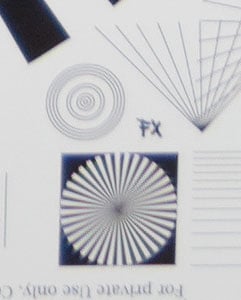 | ||
21mm, f4.0, 100 ISO | 21mm, f4.0, 100 ISO | 21mm, f4.0, 100 ISO |
Nikon 16-35mm f/4.0G VR at 21mm with Nikon D800 100% crop from center | Nikon 16-35mm f/4.0G VR at 21mm with Nikon D800 100% crop from DX-corner | Nikon 16-35mm f/4.0G VR at 21mm with Nikon D800 100% crop from FX-corner | ||
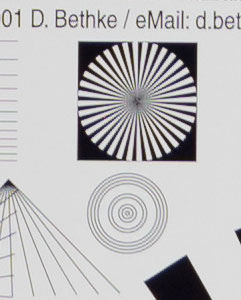 | 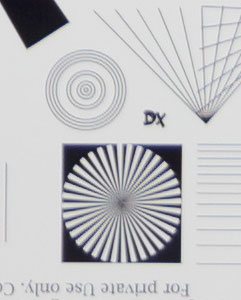 | 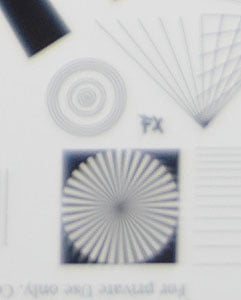 | ||
21mm, f4.0, 100 ISO | 21mm, f4.0, 100 ISO | 21mm, f4.0, 100 ISO |
I find it interesting how little difference in the center performance you can see between the fixed focal and both zoom lenses at f4.0. Looking in the DX-corner shows surprisingly that both zooms are better than the new 20/1.8G! But in the FX-corner the expected order is restored: the 20/1.8G leads the comparison with the 18-35/3.5-4.5G not far behind and the 16-35/4.0G being clearly last by a wide margin.
Performance at large distances
The Siemens-star test-targets are shot at a distance of 40x focal length (i.e. at 0.8m in this case). But performance of lenses also depends on the shooting distance. Therefore I do another series of test-shots of a landscape dubbed the “Unremarkables” where you can measure distances in km, not meter. I use this scene to show you how the lenses perform when almost everything is at infinity. I set White Balance to a standard daylight value to make them comparable across lenses shot at the same day and also try to make exposure comparable. There’s no tinkering with vignette-control so you see it here as it is produced by the lens. Focus was manually acquired at the largest aperture in live-view and not changed for other apertures.
You can click on the image to access the large original. Please respect our copyright and only use those images for personal use.
The main image shows the complete scene at f1.8 to give you an impression of the angle of view and to judge vignetting. This is followed by one row of 100% crops at f1.8 and other apertures up to f5.6 each from the middle, the DX-corner and the right FX-corner.
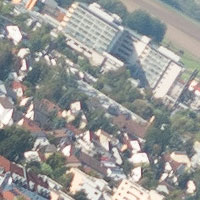 | 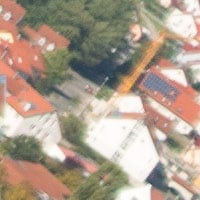 | 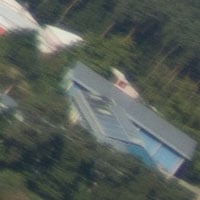 | ||
f2.8, 100 ISO, center | f2.8, 100 ISO, DX-corner | f2.8, 100 ISO, FX-corner | ||
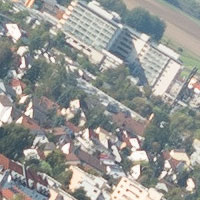 | 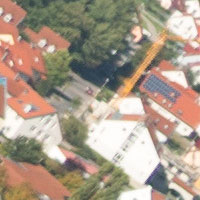 | 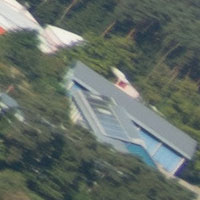 | ||
f4, 100 ISO, center | f4, 100 ISO, DX-corner | f4, 100 ISO, FX-corner | ||
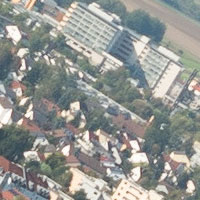 | 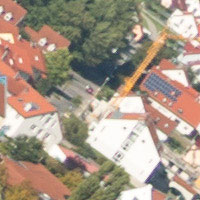 | 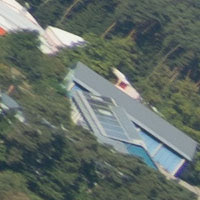 | ||
f5.6, 100 ISO, center | f5.6, 100 ISO, DX-corner | f5.6, 100 ISO, FX-corner | ||
Performance is a bit soft wide open and shows some medium vignetting. Stopping down to f2.8 improves center performance and reduces vignetting visibly, but DX- and FX-corner performance do not benefit equally. Only after stopping further down to f4 or f5.6 does performance in the corners lift to good levels.
Rendering of point-light sources at night-shots
Night-shots pose a different challenge for lenses as the contrast is even higher than under bright sun and point-light sources can reveal some weaknesses such as coma, haloing and color-aberrations that do not show up as prominently in other test-shots. The following set of 100% crops from a night-shot show the results from the 20/1.8G at f1.8 and f2.8 in the first two rows compared to the 14-24/2.8G at 20mm and f2.8 in the third row shot only a few minutes apart:
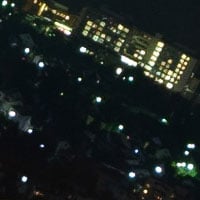 | 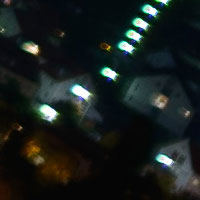 | 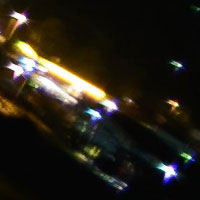 | ||
f2.8, 100 ISO, center | f2.8, 100 ISO, DX-corner | f2.8, 100 ISO, FX-corner | ||
| Unremarkables at Night: shot with Nikon AF-S 14-24mm f/2.8G at 20mm on a D800 | ||||
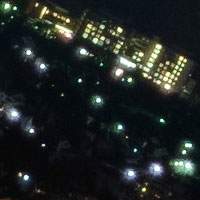 | 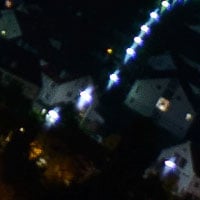 | 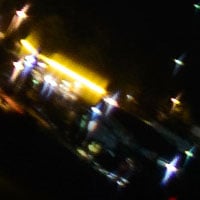 | ||
f2.8, 100 ISO, center | f2.8, 100 ISO, DX-corner | f2.8, 100 ISO, FX-corner | ||
The strong light-sources reveal some coloration, haloing, and coma at f1.8. And like in the daylight shot the center cleans up nicely by stopping down to f2.8 while the DX- and FX-corner don’t change much. Compared to the 14-24/2.8G the 20/1.8G is clearer in the center by f2.8 and shows a lower amount of coma in the FX-corner. Comparing the DX-corner reveals that both lenses show different ways of blurring point-light sources with the 20/1.8G looking less like typical coma. Stopping down to f5.6 produces artifact-free point-lights (on both lenses) which is in-line with the observations from the daylight shots.
All-in-all the new Nikon AF-S 20mm f1.8G can produce pretty sharp results if you know its limits: At closer distances the lens is sharp in the center already at f1.8 and the roll-off towards the corners is well behaved if you don’t shoot flat objects. For landscape and architecture shots I’d advise against using this lens wide open. Even f2.8 leaves you wanting as soon as you need decent sharpness outside the center. If the situation allows it stop down to at least f4 and use f5.6 or f8 for best results across the full frame.
Rendering of out-of-focus point-light sources
The following test is for the rendering of point-light sources in an out-of-focus background. The circle of confusion that is produced by this test is pretty indicative of Bokeh performance (in the background) and light fall-off. Ideally the out-of-focus image of the point-light is an evenly lit and perfectly circular disc, with no “onion-rings”, and without coloration. Large aperture lenses normally produce an effect known as “cat’s eye” the further away from the optical axis the point-light is projected. This is due to optical vignetting in the lens barrel when light enters the lens from an angle. For an explanation of this effect have a look over at toothwalker.org. The following set of 50% crops from a night-shot show the results from the 20/1.8G in the first two rows compared to the Nikon 14-24/2.8G in the third row.
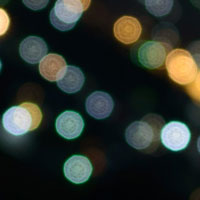 | 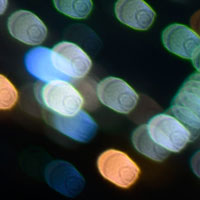 | 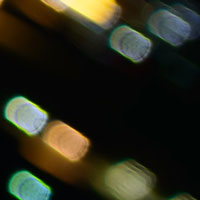 | ||
f2.8, 100 ISO, center | f2.8, 100 ISO, DX-corner | f2.8, 100 ISO, FX-corner | ||
| Unsharp Unremarkables at Night: shot with Nikon AF-S 14-24mm f/2.8G at 20mm on a D800 | ||||
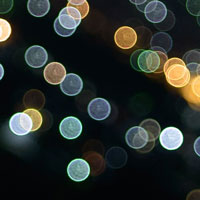 | 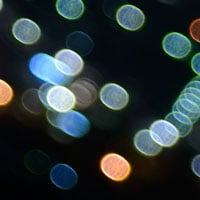 | 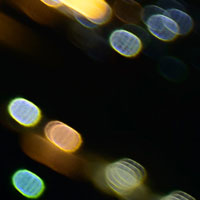 | ||
f2.8, 100 ISO, center | f2.8, 100 ISO, DX-corner | f2.8, 100 ISO, FX-corner | ||
Well, wide-angle lenses never produce circles of confusion that are as big as from longer lenses. So at 20mm you cannot expect the same smooth background blur that a 50mm or 85mm lens provides. And that holds true even if your main subject in the foreground is reproduced at equal magnification – as is the case in my shots: all lenses that I test this way are focused so that a subject of 1m size would exactly fill the frame. That’s a magnification of around 1:30.
Still the 20/1.8G produces some substantially sized circles of confusion thanks to its large aperture. Unfortunately the blobs show outlining (some of that colored green) and onion-rings resulting probably from the aspherical lens-elements. Flattening of the circles or cat’s-eye effect is minimal towards the corners. So one could expect a Bokeh that is not too bad for such a wide-angle lens. Comparison to the results from the 14-24/2.8G at 20mm f2.8 clearly shows that 20/1.8G has the upper hand here: The zoom lens delivers very pronounced outlining (although with little coloration) that results in nervous Bokeh and also produces the smaller blobs even at an identical aperture of f2.8. Compare both lenses at their respective maximum apertures the 20/1.8G leaves the 14-24/2.8G in the dust with a circle of confusion that is twice the size. The other ultra wide-angle zooms even fare worse compared to the 14-24/2.8G as their maximum aperture is f3.5 or f4.0. So if you want the best background blur at such a short focal length, the 20/1.8G is hard to beat.
Flare/ghosting
Catching a strong light-source like the sun shining directly into the lens can not always be avoided. That could produce strange colorful ghosts-images or reduce contrast considerably through flare and glare.
The appearance of flare and ghosting depends on factors like the aperture and the angle of the light hitting the lens. To judge the proclivity of a lens for these artifacts I went through a series of well calculated shots against a strong light source to provoke glare and ghosting.
| Flare/Glare: shot with Nikon AF-S 20mm f/1.8 at f8 on a D800 |
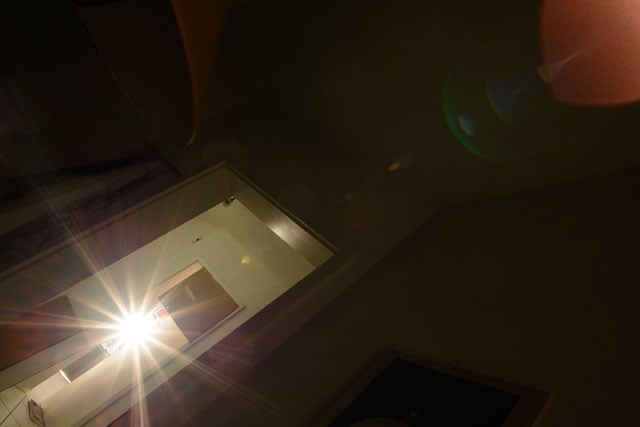 |
| 20mm, f8, 100 ISO |
The image shows one of the worst flares from a series of 33 shots that I could produce with this lens – and that is not too bad considering the adverse conditions. There’s a little veiling glare in images with strong contra-light and the blacks are still pretty black. That is a pretty decent performance especially compared to the 14-24/2.8G.
